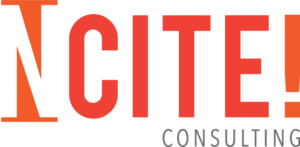We’re all guilty of setting, and then forgetting a goal, whether it be personal or professional. If you ask me, the reason behind this is that setting a goal is the easy part…following through with it is the real challenge. In the nonprofit world, we’re big dreamers, so it’s not uncommon for us to decide on a goal, and lay out all the steps only for the day-to-day to pull our attention. Soon, our plan is a forgotten document saved somewhere on the cloud and hasn’t been touched in six months.
Trust me, it happens. I promise.
Knowing this, it’s tempting to think strategic plans don’t have a purpose considering they always end up covered in digital dusk. However, I’m here to tell you this isn’t the route to go.
If you respond to not using strategic plans by never drafting them, you’re essentially treating the symptoms without understanding the illness. What I mean is instead of deciding as an organization to stop strategizing, figure out better ways to hold one another accountable. You don’t need to scrap everything. Instead, you need to better plan out your strategic plan, a topic I’ll be discussing later this month.
In the meantime, if what I said above hasn’t convinced you why strategic plans are necessary for any organization, consider your grants team. Most nonprofits partially rely on grants as a source of their annual income. While many funders have loosened the rules around their grant application since COVID, the more documentation you have showing your organization has structure, a plan, and a mission, the better. Having a detailed and documented strategic plan for your grants team consistently gives them a document to refer back to and, overall, makes their job a little bit easier.
Not to mention, these documents can support relationship management with donors. No, it’s not common for a donor to ask for a copy of your strategic plan. What is common is conversations around transparency, a theme that is particularly significant to millennials and Gen Z. Releasing a public (because these documents are usually for internal use) version of your plan, even if only part of it, publicly tells your donors (1) we have nothing to hide and (2) we want you included in the work we do beyond giving money.
And, of course, on the off chance a donor does ask for a copy, you’ll have one handy.
Lastly, I believe in the old saying, if it ain’t broke, why fix it? Organizations–both nonprofit and for-profit alike–have been using some form of strategic planning for quite a bit of time. Yes, certain organizations get more out of their plans than others, but there’s a reason strategic planning is standard in the sector. It’s worked more than it hasn’t, providing guidance when organizations may get a little lost.
It has a purpose, just like the work you do.
If you’re interested in developing a strategic plan along with an accountability plan for you and your staff, schedule a free 30-minute consultation with me to see what we can get done over these next few months. You’re not in this alone!


